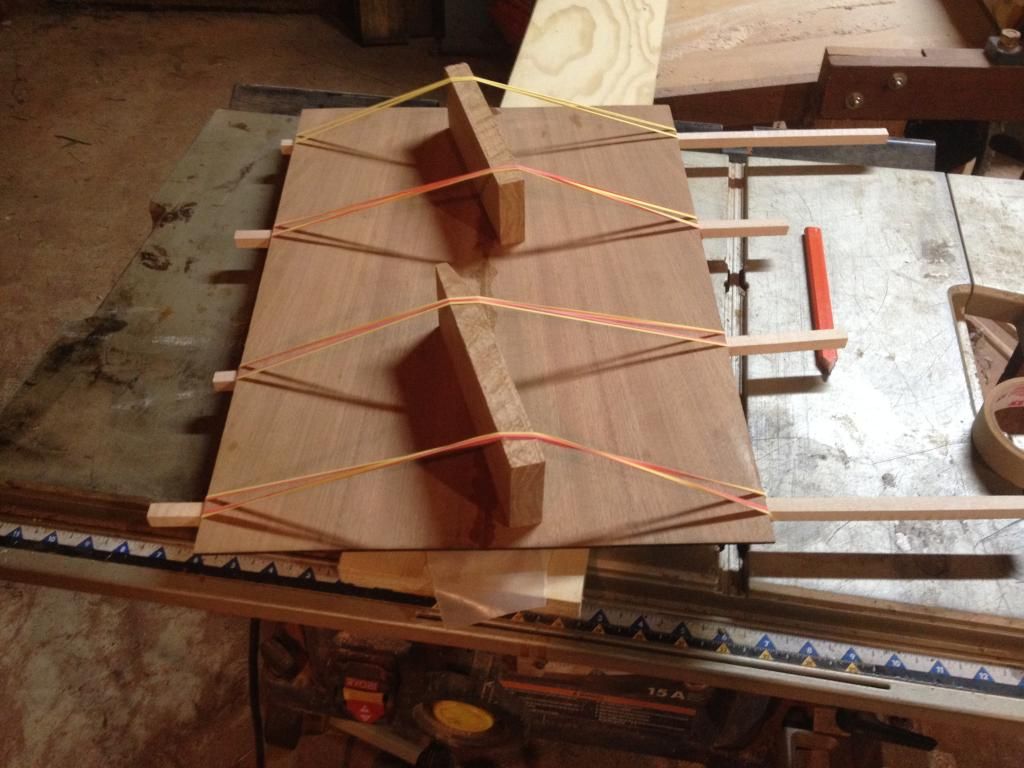SteveSmith wrote:
James Orr wrote:
I used to use the tape method with hide glue, but I have the LMI plate joining jig now and really like it.
I had exactly the same experience. I've moved from tape to the LMI jig. Well worth the price, IMO.
What advantage does the LMI jig have over tape? More pressure, certainly, but that's not necessary with a good joint. And I expect it helps to wrestle bowed plates flat, but that's more of an exceptional case. And the tape keeps glue off the show face so you don't have to scrape it, and allows pressing the joint flat against the bench with your thumbs, even in places where one half is thinner than the other (though that's an exceptional case too). And with tape, you can join up as many plates as you want all in one session, rather than having to take turns with the jig. Just a couple minutes sitting flat against the bench is enough for hide glue to be safe to move (with a couple strips of tape across the back side of the plate for security)

